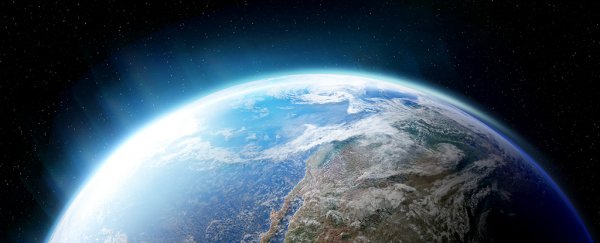
In a startling revelation, scientists have projected a future where Earth’s atmosphere could drastically change, leading to a significant drop in oxygen levels. This transformation, expected to occur in about a billion years, could ultimately suffocate most life forms reliant on oxygen. The findings, published in the journal Nature Geoscience, suggest that the planet’s atmosphere might revert to a state similar to its pre-Great Oxidation Event (GOE) condition, characterized by high methane and low oxygen levels.
Currently, Earth’s atmosphere supports complex life due to its rich oxygen supply. However, research indicates that this feature may not be permanent. The study, led by environmental scientist Kazumi Ozaki from Toho University in Japan and Earth scientist Chris Reinhard from the Georgia Institute of Technology, utilized detailed models to predict these changes. The models accounted for factors such as the Sun’s increasing brightness and the consequent decline in atmospheric carbon dioxide levels.
The Science Behind the Prediction
The researchers’ models suggest that the deoxygenation of Earth’s atmosphere will precede the onset of moist greenhouse conditions and the extensive loss of surface water. This shift is expected to occur before the planet experiences significant global warming due to the Sun’s evolution. As carbon dioxide levels decrease, fewer photosynthesizing organisms like plants will survive, leading to reduced oxygen production.
“The drop in oxygen is very, very extreme,” said Chris Reinhard. “We’re talking around a million times less oxygen than there is today.”
This prediction challenges previous estimates that suggested increased solar radiation would evaporate Earth’s oceans in about two billion years. Instead, the reduction in oxygen could pose a more immediate threat to life.
Implications for Earth and Beyond
The potential decline in Earth’s oxygen levels has significant implications for the search for extraterrestrial life. As telescopes become more powerful, scientists are keen to identify biosignatures that indicate life on other planets. The study suggests that focusing solely on oxygen as a biosignature might be insufficient. The research was part of NASA’s Nexus for Exoplanet System Science (NExSS) project, which aims to understand the habitability of planets beyond our Solar System.
According to the study, Earth’s oxygen-rich period could constitute only 20-30 percent of the planet’s entire lifespan. After the great deoxygenation, the atmosphere would likely support anaerobic life forms, with elevated methane levels, low carbon dioxide, and no ozone layer.
“The atmosphere after the great deoxygenation is characterized by an elevated methane, low-levels of CO2, and no ozone layer,” said Kazumi Ozaki. “The Earth system will probably be a world of anaerobic life forms.”
Looking to the Future
While the prospect of a deoxygenated Earth is billions of years away, it underscores the importance of understanding atmospheric dynamics and their impact on life. This research not only provides insights into Earth’s distant future but also informs the search for life elsewhere in the universe.
As scientists continue to explore these possibilities, the study encourages a broader perspective on what makes a planet habitable. By expanding the search for biosignatures beyond oxygen, researchers hope to enhance the chances of discovering life beyond Earth.
The findings, originally published in March 2021, continue to influence scientific discussions on planetary habitability and the future of life on Earth.







